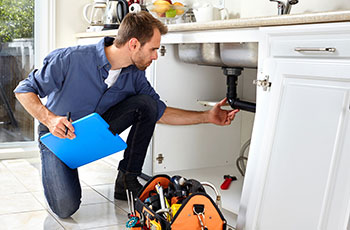Every person is bound to have his or her own notions with regards to What to Know About Plumbing: Basics, Tips, and Insights.

Plumbing is a crucial element of any home, responsible for providing tidy water for alcohol consumption, cooking, and showering, in addition to getting rid of wastewater securely. Understanding the fundamentals of home plumbing is essential for each house owner to make certain correct upkeep, troubleshooting, and, if required, repair services. In this novice's overview, we'll cover the fundamental concepts of home plumbing to assist you end up being extra aware of how it functions.
Water Supply System
The water system brings clean water right into your home from a municipal water source or a personal well. It includes a major water line that links to your home's plumbing system, generally located underground. A water meter measures the amount of water taken in, while a shut-off valve permits you to manage the circulation of water into your home.
Plumbing Components
Plumbing components are gadgets that provide water to various parts of your home and include sinks, faucets, commodes, showers, bathtubs, and devices such as dish washers and washing equipments. Each component is attached to the water system by means of pipes and installations and might have its shut-off shutoff for maintenance or emergency situations.
Water Heating System
The water heating unit is in charge of home heating water for domestic use, including bathing, food preparation, and cleaning. Common sorts of hot water heater consist of tank-type hot water heater, tankless (on-demand) water heaters, and heat pump water heaters. The water heater is connected to the supply of water system and delivers warm water to plumbing fixtures as required.
Water drainage System
The drainage system eliminates wastewater from your home and brings it away to a sewer treatment center or septic system. It consists of a network of pipelines, installations, and components that carry wastewater from plumbing fixtures to the primary drain line or sewage-disposal tank. Correct water drainage is essential to prevent clogs, backups, and sewer leaks.
Ventilation System
The air flow system helps keep proper air pressure and protect against sewer gases from entering your home. Vent pipelines, also called vent heaps, extend from plumbing components to the roofing, allowing sewer gases to get away safely outdoors. Ventilation pipelines also permit air to go into the water drainage system, promoting smooth wastewater circulation and preventing suction or vacuum results.
Common Plumbing Devices
Having the right devices available is essential for performing basic plumbing fixings and maintenance jobs. Usual plumbing tools include adjustable wrenches, pipe wrenches, pliers, pipeline cutters, hacksaws, bettors, augers (or drain serpents), and Teflon tape. Having these tools easily available can aid you tackle minor plumbing issues successfully.
Fundamental Plumbing Fixings
While some plumbing repairs may require professional support, many typical concerns can be attended to with basic do it yourself techniques. Discovering how to deal with a dripping faucet, unblock a drain, replace a commode flapper, or repair a dripping showerhead can save you money and time on plumbing repairs.
Verdict
Understanding the fundamentals of home plumbing is vital for every single property owner to preserve a secure, useful, and reliable plumbing system. By familiarizing yourself with the water system system, plumbing components, drainage system, ventilation system, typical plumbing tools, and fundamental repair services, you can with confidence deal with small plumbing issues and guarantee your home's plumbing system runs smoothly.
Understanding Basics of Home Plumbing System: A Beginner's Guide
The Main Components of Your Home Plumbing System
The Water Supply System
This system is responsible for transporting fresh water into your home. It usually has a main water line that splits into two branches: one directed towards cold water services and the other connected to a water heater for hot water. The pressure is key here; it ensures water reaches all parts of your house.
The Drainage System
Once water has been used, it becomes wastewater that needs to be removed from your home. This is where the drainage system comes into play. It includes all the pipes that carry wastewater and sewage away from your house to sewage treatment facilities or septic tanks.
The Vent System
The vent system prevents sewer gases from entering your home and helps maintain the pressure balance that allows wastewater to flow out properly. These vents usually exit through the roof of your house.
Water Heating System
For those who enjoy hot showers or using hot water for cleaning, the water heater is a crucial part of the plumbing system. It can be a tankless system, which heats water on demand, or a traditional water tank model.
Common Plumbing Problems and Basic Troubleshooting
Plumbing systems, while designed to be durable, can face issues like clogged drains, leaky faucets, or low water pressure. Here are some basic troubleshooting tips:
Clogged Drains
Use a plunger or a plumber's snake to try and dislodge whatever is blocking the drain. Regular cleaning can prevent clogs.
Leaky Faucets
Often caused by worn-out washers or gaskets, these can usually be replaced by someone with basic DIY skills.
Low Water Pressure
This might be due to sediment build-up in your fixtures or a leak somewhere in your water line. Cleaning out aerators or seeking a professional to detect leaks might be necessary.
Preventive Maintenance Tips
Maintaining your plumbing system is key to avoiding emergencies. Regularly check for leaks, avoid disposing of grease down the sink, and have your system inspected by a professional plumber at least once a year.

We are very inquisitive about Plumbing Basics For Every Home: The HomeTriangle Guide and I am hoping you liked our page. Are you aware of anybody else who is very much interested in the subject? Feel free to promote it. We truly appreciate your readership.
Website